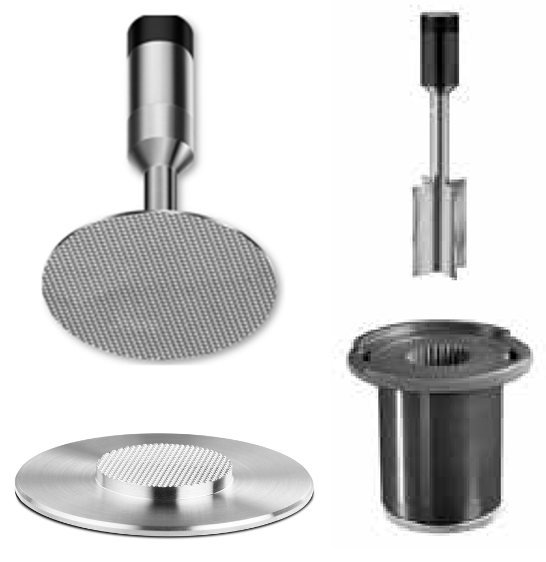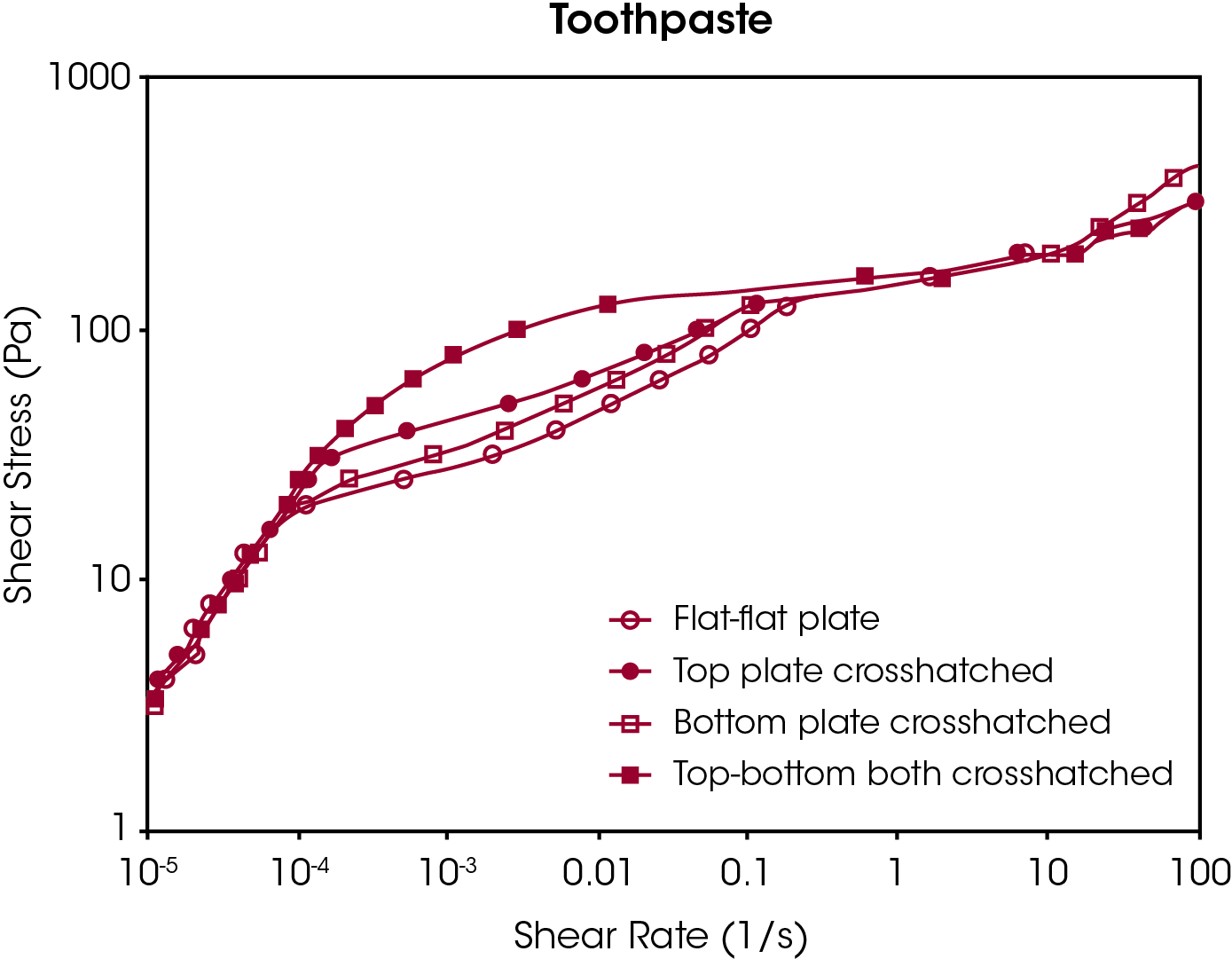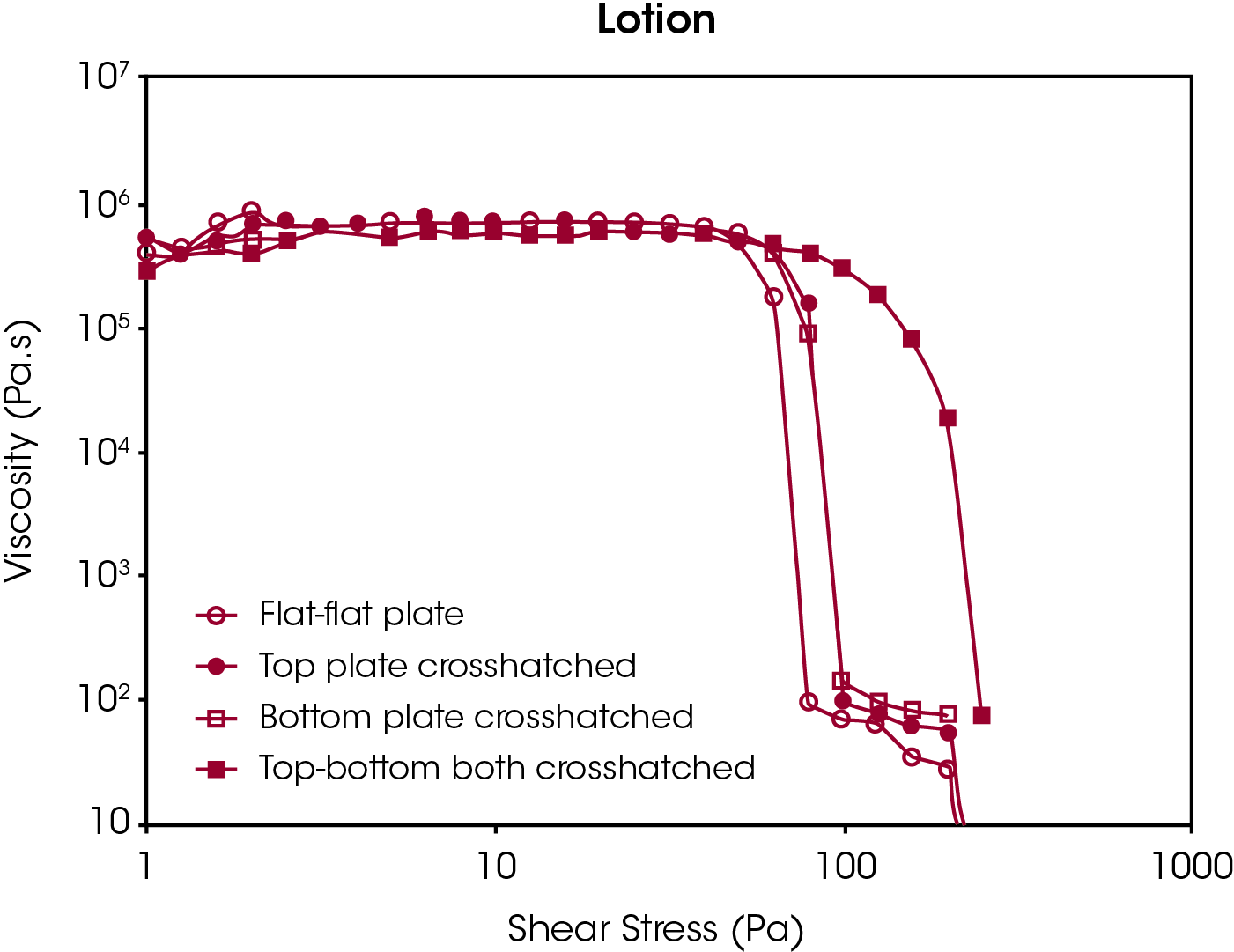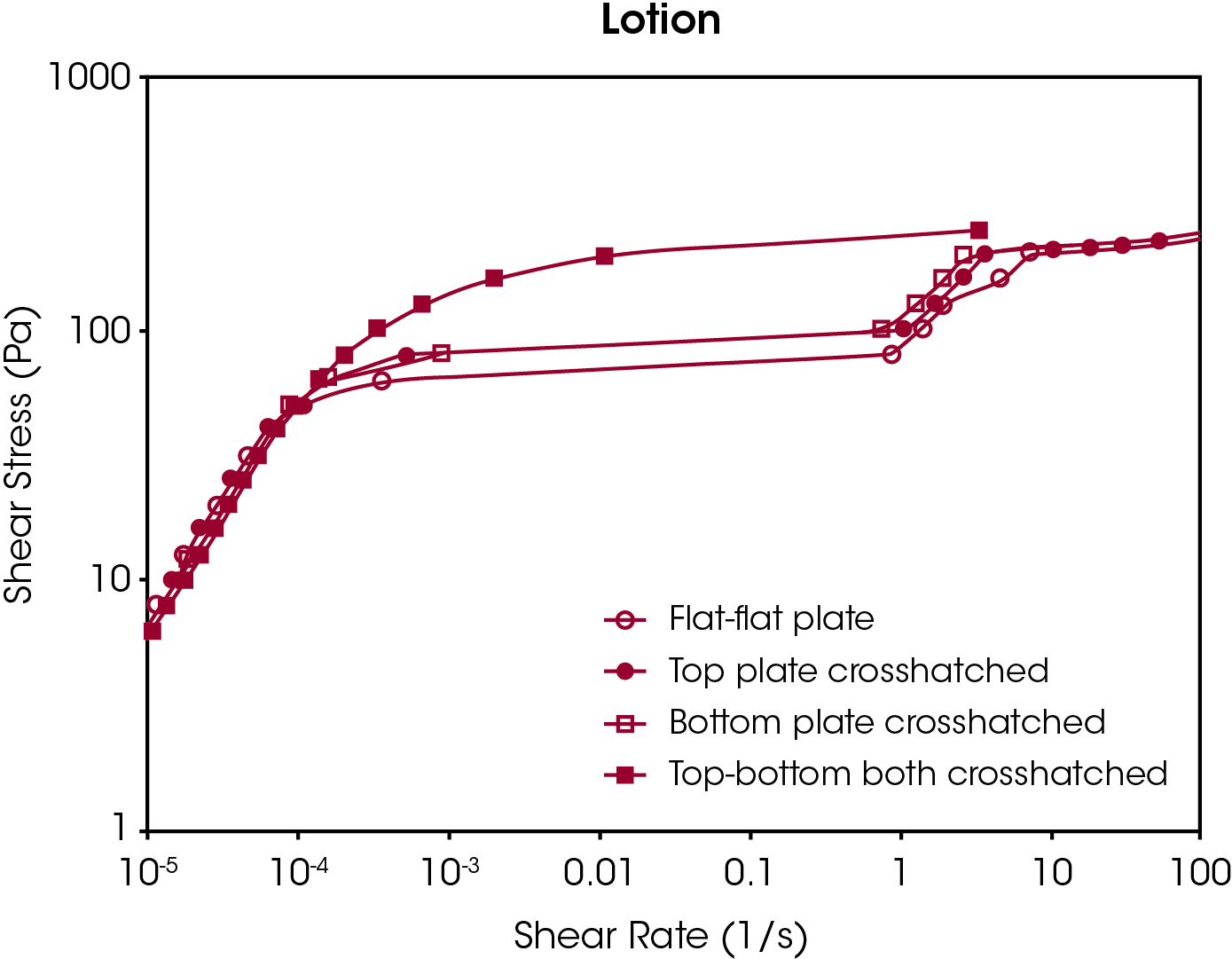Keywords: wall slip, rheology, emulsions, lotion, toothpaste
RH094
Abstract
Wall slip is a common problem when testing highly concentrated emulsions or suspensions on a rheometer. It is usually caused by large velocity gradients in a thin region adjacent to the wall. When slip occurs, the measured viscosity can be significantly lower than the actual viscosity of the sample. To overcome this influence, we have introduced a series of roughened surface geometries, such as crosshatched or serrated plates, which significantly improve the contact between the geometry and the sample to reduce slip. A vane shaped geometry, with a grooved inner surface cup, is also considered to be effective in reducing wall slip. Experimental data have shown the influence of wall slip on rheological test results and the improvement when the crosshatched geometries were used.
Introduction
Wall slip is a common phenomenon in rheology testing. It usually arises from static, hydrodynamic, viscoelastic, chemical, and gravitational forces acting on a dispersed phase immediately adjacent to solid boundaries. The creation of such a low viscosity boundary at a wall means that flow of the liquid over this boundary is easier because of the lubrication effect – “slip”. Common liquids that show large slip effects are concentrated solutions of high molecular weight polymers, suspensions of large or flocculated particles, and emulsions of large droplet size. Slip always influences the rheological measurement of these kinds of materials, for example, the viscosity measurements, yield stress analysis, oscillation strain/stress sweep testing, etc.
Rheologists have characterized the nature of wall slip in rheology analysis [1-5]. In many cases, slip manifests itself in such a way that the viscosity value one determines is dependent on the geometry dimensions. In particular, the measured apparent viscosity decreases with a decrease in geometry size [1]. To overcome wall slip effects, one can either alter the sample gap, or chemically or physically change the surface properties of the geometry. TA Instruments provides a series of roughened surface geometries that have crosshatched or serrated surfaces. If the sample can be loaded into a cup/bob geometry, a vane shaped rotor can also be used (Figure 1). The vane shaped rotor is considered the best solution for eliminating wall slip. In this paper, we have studied how slip affects the yield stress analysis on dispersions and emulsions. We also discussed the effectiveness of using roughened surface geometries to eliminate wall slip.

Experimental
Toothpaste and lotion were chosen as examples of highly concentrated dispersions and emulsions, respectively. All experiments were conducted on TA Instruments rotational rheometer with a Peltier plate temperature control system. A steady state flow experiment was programmed at 25 °C from low torque up to the point beyond the yield stress of each sample.
Results and Discussions
It is known that wall slip phenomena can have large effects on steady shear rheological measurements. It especially affects the measurements at low shear rates and at stresses below the yield stress of the sample. Toothpaste is a typical concentrated dispersion material. In most cases, due to osmotic pressure and/or gravitational force, the solid particles in toothpaste tend to stay away from the boundary between the sample and surface of the geometry. This creates a thin low-concentration layer adjacent to the geometry wall. Any measurements on this thin layer will give artificially low results because of this slip effect. Figure 1 shows the steady state flow testing results on toothpaste with smooth and crosshatched plate geometries. When using standard smooth surface plates, the measured yield stress was 18.1 Pa, which is significantly lower than the true yield stress of this material. In order to overcome wall slip influence, we used crosshatched plate geometries, which have roughened surfaces. This kind of geometry can easily break through the slip layer and enhance contact with the sample. Figure 2 shows that when crosshatched bottom and top plates were used, the measured yield stress was 105.2 Pa. This is more than 5 times greater than the yield stress measured using regular smooth plates. Figure 2 and Table 1 also show the improvements by using crosshatched surface only on either the top or bottom plate.
Hand lotion is an example of a highly concentrated emulsion material. Figure 3 shows that, with smooth parallel plate geometry, sample slip is significant at low shear stresses. The measured yield stress was 60.6 Pa, which is about 65% lower than the yield stress measured using crosshatched geometries. The actual yield stress for this lotion was 175 Pa when measured with crosshatched geometries. Table 1 also shows the improvements of using just one side (top or bottom) crosshatched geometry.



Table 1. Yield stresses measured using geometries with different surface properties
| Sample | Toothpaste (Dispersion) | |||
|---|---|---|---|---|
| Geometry | SP(a) | BCH(b) | TCH(c) | TBCH(d) |
| Yield (Pa) | 18.1 | 21.7 | 32.2 | 105.2 |
| Sample | Hand Cream (Emulsion) | |||
| Geometry | SP(a) | BCH(b) | TCH(c) | TBCH(d) |
| Yield (Pa) | 60.6 | 76.4 | 76.6 | 175.0 |
(a) SP: Smooth flat-flat plates
(b) BCH: Bottom plate crosshatched, top plate smooth
(c) TCH: Top plate crosshatched, bottom plate smooth
(d) TBCH: Both top and bottom plates are crosshatched

Conclusions
Wall slip is a common problem when testing concentrated dispersions and emulsions on a rheometer. Using crosshatched or vane shaped geometries can effectively prevent wall slip during the test. Experimental results presented here show that using the crosshatched geometry can eliminate slip, so one can accurately measure the material’s yield stress.
References
- Howard A. Barnes. “A review of the slip (wall depletion) of polymer solutions, emulsions and particle suspensions in viscositers: its cause, character, and cure.” J. Non-Newtonian Fluid Mech., 56, 221-251, 1995
- Ann S. Yoshimura; R.K.Prud’Homme. “Wall slip effects on dynamic oscillatory measurements.” J. of Rheology, 32, 6, 575- 584, 1988
- V.Bertola; F. Bertrand; H. Tabuteau; D. Bonn; P. Coussot. “Wall slip and yielding in pasty materials.” J. of Rheology, 47, 5, 1211-1226, 2003
- H.J.Walls; S.Brett Caines; Angelica M. Sanchez; Saad A. Khan. “Yield stress and wall slip phenomena in colloidal silica gels.” J. of Rheology, 47, 4, 847-868, 2003
- Julia A. Kornfield; Charles S. Nickerson. “A Novel “cheat” geometry for suppressing wall slip.” Proc. XIVth Int. Congr. On Rheology. Aug 22-27, 2004, Seoul Korea
Acknowledgement
This paper was written by Tianhong (Terri) Chen, PhD. Applications Specialist at TA Instruments.
Click here to download the printable version of this application note.

